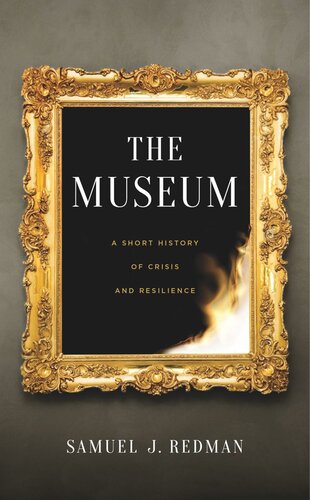

Most ebook files are in PDF format, so you can easily read them using various software such as Foxit Reader or directly on the Google Chrome browser.
Some ebook files are released by publishers in other formats such as .awz, .mobi, .epub, .fb2, etc. You may need to install specific software to read these formats on mobile/PC, such as Calibre.
Please read the tutorial at this link: https://ebookbell.com/faq
We offer FREE conversion to the popular formats you request; however, this may take some time. Therefore, right after payment, please email us, and we will try to provide the service as quickly as possible.
For some exceptional file formats or broken links (if any), please refrain from opening any disputes. Instead, email us first, and we will try to assist within a maximum of 6 hours.
EbookBell Team

4.1
30 reviewsCelebrates the resilience of American cultural institutions in the face of national crises and challenges
On an afternoon in January 1865, a roaring fire swept through the Smithsonian Institution. Dazed soldiers and worried citizens could only watch as the flames engulfed the museum’s castle. Rare objects and valuable paintings were destroyed. The flames at the Smithsonian were not the first—and certainly would not be the last— disaster to upend a museum in the United States. Beset by challenges ranging from pandemic and war to fire and economic uncertainty, museums have sought ways to emerge from crisis periods stronger than before, occasionally carving important new paths forward in the process.
The Museum explores the concepts of “crisis” as it relates to museums, and how these historic institutions have dealt with challenges ranging from depression and war to pandemic and philosophical uncertainty. Fires, floods, and hurricanes have all upended museum plans and forced people to ask difficult questions about American cultural life. With chapters exploring World War I and the 1918 influenza pandemic, the Great Depression, World War II, the 1970 Art Strike in New York City, and recent controversies in American museums, this book takes a new approach to understanding museum history. By diving deeper into the changes that emerged from these key challenges, Samuel J. Redman argues that cultural institutions can—and should— use their history to prepare for challenges and solidify their identity going forward. A captivating examination of crisis moments in US museum history from the early years of the twentieth century to the present day, The Museum offers inspiration in the resilience and longevity of America’s most prized cultural institutions.